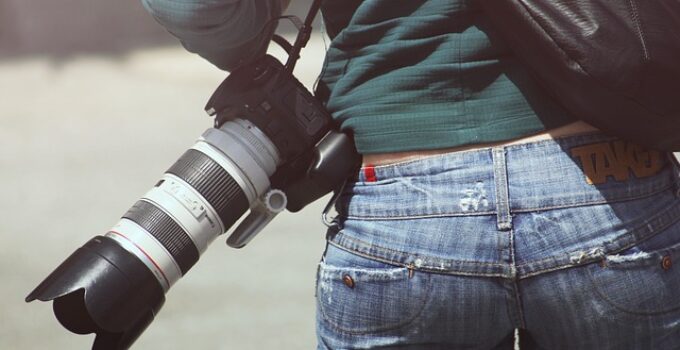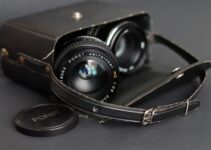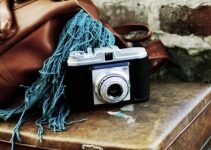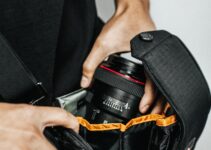Wrapping a plastic bag around your camera can provide extra protection from moisture, dust, and other elements that can harm your gear.
While there are many different approaches to doing so, each method has its own set of advantages and disadvantages.
In this article, we will explore 7 different methods for wrapping a plastic bag around your camera, detailing the pros and cons of each approach.
Whether you’re a seasoned professional or just starting out, this comprehensive guide will help you find the best solution for your needs and ensure your camera stays safe in any environment.
7 ways to wrap a plastic bag around camera
Here are 7 ways to wrap a plastic bag around camera.
1. The Basic Wrap:
The Basic Wrap is the simplest and most straightforward method for wrapping a plastic bag around a camera. To do this, you’ll need a plastic bag that is large enough to accommodate your camera and lens.
Simply place your camera inside the bag, making sure that the lens and other important parts are not touching the sides of the bag.
Then, use a rubber band or similar material to secure the open end of the bag around the camera. This will keep the camera protected from moisture and dust.
The advantage of the Basic Wrap is that it’s quick and easy to do, but it may not provide as much protection as other methods, especially if the bag is not tightly secured.
2. The Sandwich Method:
The Sandwich Method is a more secure way of wrapping a plastic bag around a camera. This method involves placing the camera between two plastic bags and securing the bags together using a rubber band or tape.
To start, place the camera inside one plastic bag, making sure that all parts of the camera are not touching the sides of the bag. Then, place the second bag over the first one, aligning the edges.
Finally, secure the two bags together by wrapping a rubber band or tape around the edges.
The benefit of this method is that it provides double the protection against moisture and dust, as two plastic layers surround the camera.
The disadvantage is that it may be more difficult to access the camera if you need to make any adjustments while it is wrapped.
3. The Ziplock Method:
The Ziplock Method is a convenient way to wrap a plastic bag around a camera, as it uses a resealable plastic bag. To start, choose a large ziplock bag that will fit your camera and lens comfortably.
Place your camera inside the bag, making sure to squeeze out all the air before sealing the bag.
The advantage of the Ziplock Method is that it provides an airtight seal, which protects the camera from moisture and dust.
4. The Bubble Wrap Method:
The Bubble Wrap Method is a great option for extra protection for your camera. This method involves wrapping the camera in bubble wrap before placing it inside a plastic bag.
To start, place your camera in the centre of a piece of bubble wrap and wrap the bubble wrap tightly around the camera. Then, place the bubble-wrapped camera inside a plastic bag, making sure that all parts of the camera are not touching the sides of the bag.
Secure the open end of the bag with a rubber band or tape. The advantage of the Bubble Wrap Method is that the bubble wrap provides additional cushioning and shock absorption, which protects the camera from scratches, bumps, and other impacts.
This method is especially useful if you’re transporting the camera in a backpack or other type of carrying case.
5. The Zip Tie Method:
The Zip Tie Method is a secure and durable way to wrap a plastic bag around a camera. This method involves using zip ties to secure a plastic bag around the camera, ensuring a tight and snug fit.
To start, choose a plastic bag that is large enough to accommodate your camera and lens. Place the camera inside the bag and use zip ties to secure the open end of the bag around the camera. Make sure that the zip ties are tight and snug, but not so tight that they put pressure on the camera or lens.
The advantage of the Zip Tie Method is that it provides a secure and durable solution that will protect the camera from moisture, dust, and other elements.
The zip ties also make it easy to open and close the bag as needed. Additionally, if the plastic bag is damaged, the zip ties can be cut and replaced without having to replace the entire bag.
6. The Rubber Band Method:
The Rubber Band Method is a simple and effective way to wrap a plastic bag around a camera. This method involves wrapping the camera in a plastic bag and securing it with multiple rubber bands for added protection.
To start, choose a plastic bag that is large enough to accommodate your camera and lens. Place the camera inside the bag, making sure that all parts of the camera are not touching the sides of the bag.
Then, use multiple rubber bands to secure the open end of the bag around the camera. The advantage of the Rubber Band Method is that it provides extra security and protection against moisture and dust.
Additionally, if one rubber band breaks, the others will still keep the bag securely in place.
The disadvantage is that the rubber bands can become brittle and break over time, so it’s important to periodically check the rubber bands and replace them as needed.
7. The Saran Wrap Method:
The Saran Wrap Method is a great way to wrap a plastic bag around a camera for added protection. This method involves using plastic wrap (such as Saran Wrap) to secure the plastic bag in place around the camera.
To start, choose a plastic bag that is large enough to accommodate your camera and lens. Place the camera inside the bag, making sure that all parts of the camera are not touching the sides of the bag.

Then, use plastic wrap to secure the open end of the bag around the camera. The advantage of the Saran Wrap Method is that it provides extra protection against moisture and dust, as the plastic wrap helps to keep the bag securely in place. Additionally, the plastic wrap can be easily replaced if it becomes damaged or lost.
The disadvantage is that the plastic wrap can be difficult to remove, especially if it has become sticky over time.
It’s also important to make sure that the plastic wrap does not come into contact with any parts of the camera, as this can cause damage to the camera or lens.
Each of these methods offers different levels of protection and accessibility, so choose the one that best suits your needs and the environment you’ll be using it in.
Related FAQ’s
How do you protect a camera with a plastic bag?
Protecting a camera with a plastic bag is a simple and effective way to protect it from moisture, dust, and other elements. Here are some steps you can follow to protect your camera with a plastic bag:
- Choose a plastic bag that is large enough to accommodate your camera and lens.
- Place the camera inside the bag, making sure that all parts of the camera are not touching the sides of the bag.
- Squeeze out all the air from the bag before sealing it.
- Secure the open end of the bag with a rubber band, zip tie, or other method.
- Check the bag periodically to make sure that it is still securely in place and that no moisture or dust has entered the bag.
It’s important to make sure that the plastic bag is not so tight that it puts pressure on the camera or lens. Additionally, if the bag becomes damaged or dirty, it’s best to replace it with a new one to ensure that the camera stays protected.
How do you protect your camera from rain with a plastic bag?
Protecting your camera from rain with a plastic bag is a simple and affordable solution that can help keep your camera dry in wet weather. Here are some steps you can follow to protect your camera from rain with a plastic bag:
- Choose a plastic bag that is large enough to accommodate your camera and lens.
- Place the camera inside the bag, making sure that all parts of the camera are not touching the sides of the bag.
- Squeeze out all the air from the bag before sealing it.
- Secure the open end of the bag with a rubber band, zip tie, or other method to prevent water from entering the bag.
- Cover the bag with a rain cover or a large umbrella to further protect the camera from the rain.
It’s important to make sure that the plastic bag is completely sealed and that no water can enter the bag, as this can cause damage to the camera.
Additionally, make sure that the plastic bag is not so tight that it puts pressure on the camera or lens. If you’re shooting in heavy rain, it’s best to have a high-quality rain cover for your camera to ensure that it stays completely dry.








